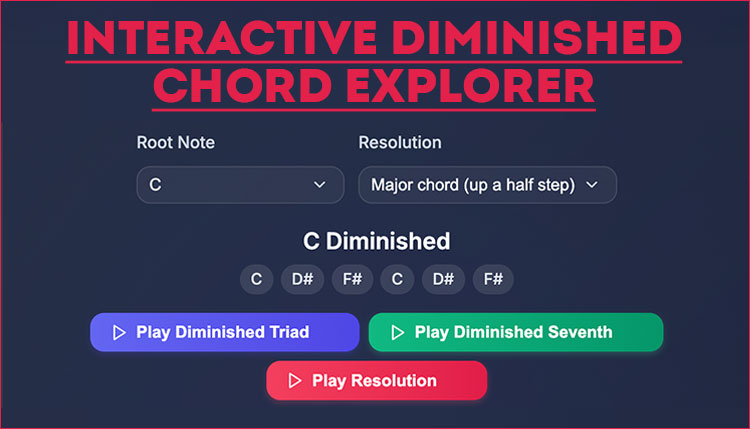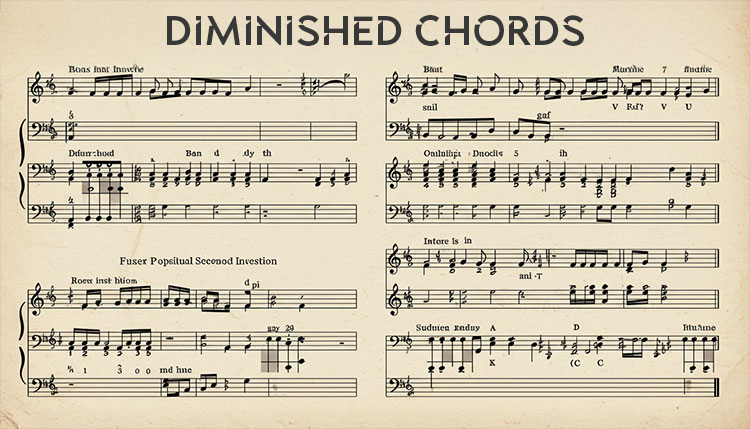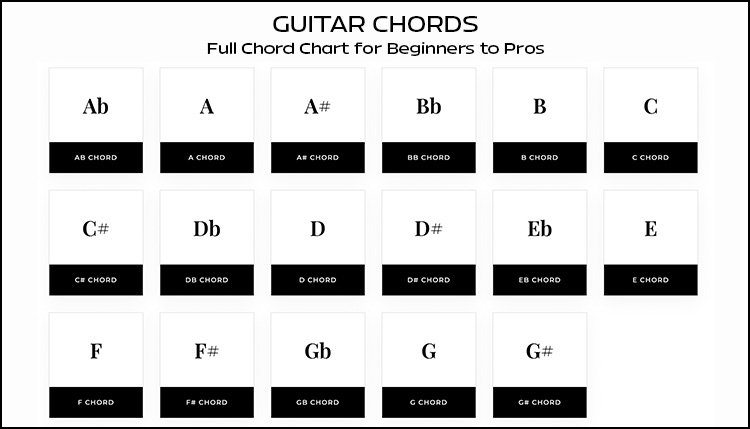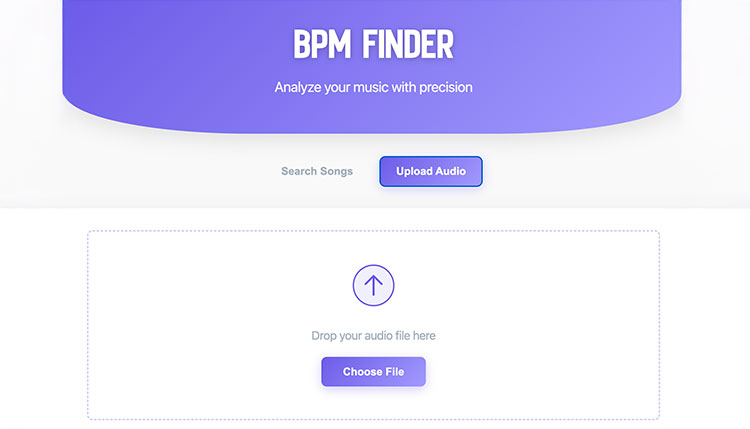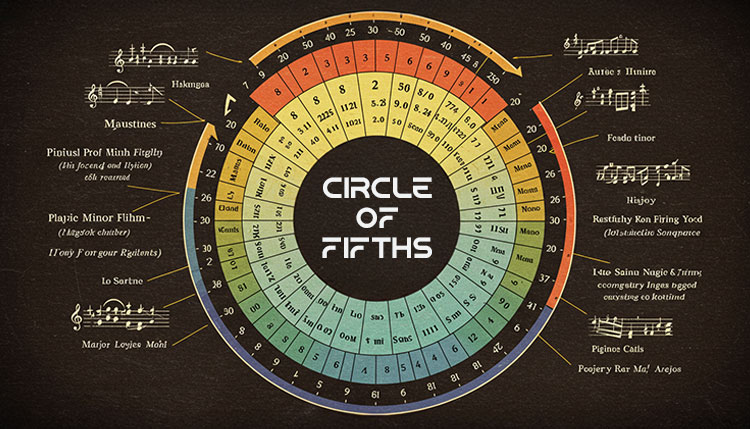“Music is the shorthand of emotion.” That’s what Leo Tolstoy said, and honestly, he was onto something.
Ever notice how a single chord can make your hair stand up or your heart skip a beat?
That’s the magic of music theory, and today, we’re diving into one of its most mysterious tricks: the diminished chord.
If you’ve ever wondered why some songs sound so tense, dramatic, or just plain spooky, you’re in the right place.
Diminished chords are like the secret sauce in your grandma’s chili—just a pinch, and everything changes.
Whether you’re strumming a guitar, plunking away on a piano, or just geeking out over chord progressions, understanding diminished chords can seriously level up your music game.
Did you know that diminished chords have been used in everything from jazz standards to pop hits? Yeah, they’re that versatile.
So, buckle up, because we’re about to make sense of all those weird symbols and finger-twisting shapes. Let’s get into it!
What is a Diminished Chord?
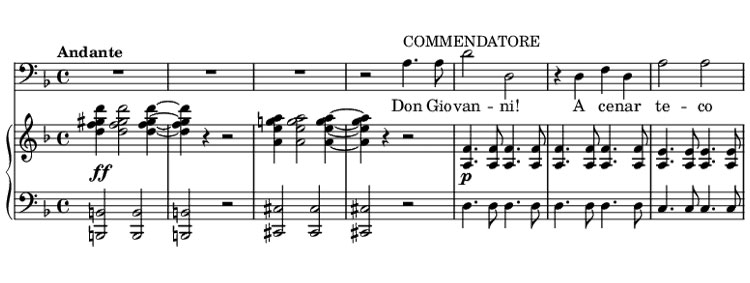
Alright, let’s break it down. A diminished chord is basically the musical equivalent of a plot twist.
You’re cruising along in a song, everything’s chill, and then—bam!—the diminished chord hits, and suddenly you’re on the edge of your seat.
It’s not just another chord; it’s the one that makes you go, “Whoa, what just happened?”
In music theory, a diminished chord is built by stacking minor thirds on top of each other.
That means you take a note, count up three semitones, add another note, and then do it again.
The result? A chord that sounds tense, mysterious, and a little bit unstable. It’s like the musical version of a cliffhanger.
- Creates tension and suspense in music
- Built from minor third intervals
- Sounds dark, dramatic, and unresolved
- Used in jazz, blues, classical, and even pop music
- Often written as “dim” or with a little circle symbol (°)
Here’s a fun fact: the diminished chord is one of the few chords that’s symmetrical. That means if you move every note up by three semitones, you get another diminished chord.
Wild, right? It’s like musical déjà vu. And because of that symmetry, diminished chords can be used in all sorts of sneaky ways to connect different parts of a song.
If you’re a songwriter, this is the kind of trick that can make your music stand out.
Plus, they’re not just for spooky Halloween tunes—diminished chords show up in love songs, rock anthems, and even video game soundtracks.
- Perfect for transitions between chords
- Adds a sense of movement and urgency
- Can be used as passing chords or to set up big resolutions
- Great for building drama in a song
If you’re still not sure what a diminished chord sounds like, try playing C, Eb, and Gb together on a piano. Or grab your guitar and play the shape: x 3 4 2 4 x.
Hear that? That’s the sound of suspense. And hey, if you mess up the first time, don’t sweat it—these chords can be a little tricky at first, but they’re totally worth learning.
Oh, and here’s a pro tip: listen for diminished chords in movie soundtracks. Next time you’re watching a thriller, see if you can spot that tense, unresolved sound. It’s probably a diminished chord doing its thing.
- Try using diminished chords in your own progressions
- Listen for them in your favorite songs
- Experiment with different voicings and inversions
- Don’t be afraid to get a little weird—sometimes, that’s where the magic happens
Interactive Tool: Explore Diminished Chords
Alright, here’s where things get really fun. Imagine being able to hear diminished chords in any key, see guitar and piano shapes, and even build your own custom chords—all in one place.
That’s what our interactive tool is all about. Whether you’re a beginner or a seasoned pro, this tool will help you experiment with diminished chords and see how they fit into different progressions. It’s like having a music theory lab right at your fingertips.
- Hear diminished chords in every key
- See chord shapes for guitar and piano
- Build custom diminished chords and hear how they sound
- Visualize how diminished chords resolve in real songs
- Experiment with different voicings and inversions
Why bother with a tool like this? Well, sometimes it’s hard to really “get” a chord just by reading about it.
Hearing it in context, seeing the shapes, and playing around with different options can make all the difference.
Plus, it’s just plain fun. You might even discover a new favorite chord or progression. And if you’re a teacher, this tool is a great way to show students how diminished chords work in real time.
- Use the tool to practice ear training and chord recognition
- Try building progressions with and without diminished chords to hear the difference
- Share your creations with friends or students
- Use the tool as a songwriting aid when you’re stuck
- Keep an eye out for updates—we’re always adding new features!
If you’re curious about other interactive music tools, check out Hooktheory’s free tools for exploring chords and progressions. They’re a great way to get inspired and learn more about music theory.
Diminished Chord Theory Explained
Okay, let’s get a little nerdy—but not too much, promise. The theory behind diminished chords is actually pretty cool.
At its core, a diminished chord is made up of three notes: the root, the minor third, and the diminished fifth.
If you’re thinking, “Wait, what’s a diminished fifth?”—don’t worry, you’re not alone. It’s just a fancy way of saying you take the fifth note of the scale and lower it by a half step.
So, if you’re in C, the fifth is G, and the diminished fifth is Gb. Easy, right?
The formula looks like this: Root + Minor Third (3 semitones) + Diminished Fifth (6 semitones).
- Root note: the starting point of the chord
- Minor third: three semitones above the root
- Diminished fifth: six semitones above the root
- Stacking minor thirds creates the unique sound
- Can be extended to a diminished seventh by adding another minor third
Here’s where it gets spicy: there are two main types of diminished chords. The first is the diminished triad, which is just the three notes we talked about. The second is the diminished seventh chord, which adds one more minor third on top.
That gives you a chord with four notes, and it sounds even more tense and dramatic.
In notation, you’ll see “dim” for the triad and “dim7” for the seventh chord. Sometimes, you’ll see a little circle (°) for the triad and a circle with a slash (ø) for the half-diminished seventh. Yeah, music theory loves its symbols.
- Diminished triad: root, minor third, diminished fifth
- Diminished seventh: add a diminished seventh (nine semitones above the root)
- Half-diminished: root, minor third, diminished fifth, major sixth (or minor seventh)
- Notated as dim, dim7, or with symbols like ° and ø
- Used in all sorts of genres, from jazz to classical to pop
One of the coolest things about diminished chords is how they fit into scales and keys.
In a major key, the diminished chord usually shows up as the seventh chord (built on the seventh degree of the scale).
In C major, that’s Bdim: B, D, F.
It’s the chord that wants to resolve back to the tonic, creating that classic tension-and-release vibe.
And because diminished chords are symmetrical, you can use them to modulate between keys or create unexpected twists in your music.
It’s like having a secret passageway in your chord progressions.
- Common in jazz progressions (like ii-V-I with a diminished passing chord)
- Great for modulating between keys
- Perfect for building suspense before resolving to the tonic
- Can be used as a substitute for dominant chords
- Try using diminished chords in your own songwriting for a unique sound
If you want to dig deeper into chord theory, check out MusicTheory.net’s lesson on diminished chords.
It’s a solid resource for wrapping your head around all the intervals and formulas.
And hey, don’t be afraid to experiment—sometimes the best way to learn is by just messing around on your instrument and seeing what sounds cool.
How to Play Diminished Chords on Guitar and Piano
Alright, let’s get our hands dirty. Playing diminished chords can feel a little awkward at first, but once you get the hang of it, you’ll wonder how you ever lived without them.
On guitar, the shapes can look a bit intimidating, but they’re actually pretty logical once you break them down.
For example, a common C diminished shape is x 3 4 2 4 x. That’s just a fancy way of saying you’re playing C, Eb, and Gb.
On piano, it’s even easier—just play C, Eb, and Gb together. Boom, you’ve got a diminished chord.
- Start with simple shapes and voicings
- Practice moving between diminished and other chords
- Use diminished chords as passing chords in progressions
- Try different inversions for a smoother sound
- Don’t stress if it sounds weird at first—that’s kind of the point!
Here’s a quick tip: on guitar, you can move diminished shapes up and down the neck in minor third intervals, and you’ll always get another diminished chord. It’s like a cheat code for cool-sounding transitions.
On piano, try playing a diminished chord and then resolving to a major or minor chord a half step up or down.
That tension and release is what makes diminished chords so powerful. And if you’re into jazz, you’ll find diminished chords all over the place—especially in turnarounds and intros.
- Use chord charts and diagrams to learn new shapes
- Practice with a metronome to get comfortable switching chords
- Experiment with adding diminished chords to your favorite songs
- Record yourself playing to hear how the chords sound in context
- Ask a friend or teacher for feedback if you’re stuck
If you’re looking for more practice material, check out JustinGuitar’s lesson on diminished chords. It’s packed with tips, exercises, and diagrams to help you master these tricky shapes.
And remember, everyone struggles with new chords at first—just keep at it, and you’ll get there.
Diminished Chords in Songwriting and Composition
Now for the fun part—using diminished chords in your own music.
These chords are like the secret weapon in a songwriter’s arsenal. They’re perfect for adding drama, tension, and a sense of movement to your songs.
One of the most common ways to use a diminished chord is as a passing chord. That means you slip it in between two other chords to create a smooth transition.
For example, in the key of C major, you might go from C to C#dim to Dm. That little half-step movement adds a ton of flavor.
- Use diminished chords as passing chords between major and minor chords
- Add them to turnarounds for a jazzy vibe
- Try substituting a diminished chord for a dominant chord for a fresh sound
- Experiment with diminished chords in different genres—jazz, blues, pop, classical, you name it
- Listen for diminished chords in your favorite songs and try to figure out how they’re used
Here’s a cool trick: diminished chords are great for building suspense before a big resolution. If you want your chorus to hit extra hard, try setting it up with a diminished chord. It’s like pulling back a slingshot before letting it fly.
And if you’re into jazz, you’ll find diminished chords all over the place—especially in turnarounds and intros. Even in pop music, you’ll hear them sneaking in to add a little spice.
For example, The Beatles used diminished chords in “Michelle,” and The Beach Boys used them in “God Only Knows.” Not too shabby, right?
- Analyze chord progressions in popular songs to spot diminished chords
- Write your own progressions using diminished chords for tension and release
- Try using diminished chords in different keys and modes
- Don’t be afraid to break the rules—sometimes the best ideas come from experimenting
- Share your music with others and get feedback on your use of diminished chords
If you’re feeling stuck, try this: pick a key, write out the diatonic chords, and see where you can sneak in a diminished chord. It might feel weird at first, but that’s the point!
Diminished chords are all about surprise and movement. And hey, if you come up with something cool, share it online—there’s a whole community of musicians out there who love geeking out over chord progressions.
Frequently Asked Questions About Diminished Chords
Got questions? You’re not alone. Diminished chords can be a little confusing at first, but once you get the hang of them, they’re actually pretty straightforward.
Here are some of the most common questions people have about diminished chords, along with some quick answers to help you out.
What’s the difference between diminished and minor chords?
A minor chord has a root, minor third, and perfect fifth. A diminished chord lowers the fifth by a half step, creating more tension and a darker sound.
Are diminished chords hard to play?
They can feel awkward at first, especially on guitar, but with practice, they become second nature. Start slow and use chord charts to help you out.
Can I use diminished chords in any genre?
Absolutely! Diminished chords show up in jazz, blues, classical, pop, rock, and even metal. They’re super versatile.
How do I resolve a diminished chord?
The most common resolution is to move to a chord a half step up, like going from Bdim to C. But don’t be afraid to experiment—sometimes the best resolutions are the unexpected ones.
Why do diminished chords sound so tense?
It’s all about the intervals. The minor third and diminished fifth create a sense of instability that makes your ear crave resolution. That’s what gives diminished chords their unique vibe.
And remember, ask questions! Everyone starts somewhere, and even the pros had to learn this stuff once.
- Practice makes perfect—don’t give up if it feels tricky at first
- Use online resources and tools to help you learn
- Ask for help from friends, teachers, or online communities
- Keep experimenting and having fun with your music
- Remember: music is supposed to be fun, not stressful!
The Wrap Up
So, there you have it—the lowdown on diminished chords. These little guys might seem intimidating at first, but once you get to know them, they’re actually pretty awesome.
They add drama, tension, and a whole lot of character to your music.
Whether you’re writing your next big hit or just jamming with friends, don’t be afraid to throw a diminished chord into the mix. You might be surprised at how much it changes the vibe.
- Recap: Diminished chords create tension and movement in music
- They’re used in all sorts of genres and styles
- Learning to play and use them opens up new creative possibilities
- Don’t be afraid to experiment and make mistakes
- Check out interactive tools and resources to keep learning
Remember, music is all about expressing yourself. There’s no right or wrong way to use diminished chords—just have fun and see where they take you.
And if you want to dive even deeper, check out Teoria’s chord tutorials for more in-depth lessons and examples.
Now go make some noise!

